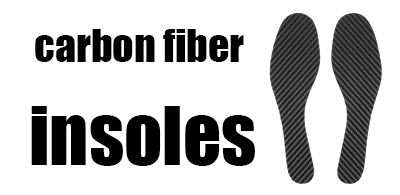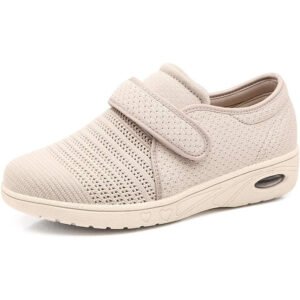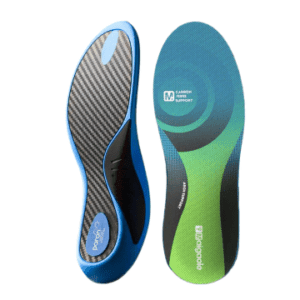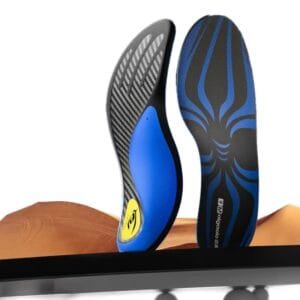Running is one of the most popular forms of exercise, but it also comes with a high risk of injuries—especially for long-distance runners and sprinters. Common issues like plantar fasciitis, shin splints, and knee pain can derail training progress. Fortunately, carbon fiber insoles are emerging as a game-changer in injury prevention and recovery.
These high-performance insoles leverage the lightweight yet ultra-strong properties of carbon fiber to enhance stability, reduce impact, and improve energy return. Whether you’re training for a marathon or sprinting on the track, carbon fiber insoles can help you run faster, recover quicker, and stay injury-free.
1. How Carbon Fiber Insoles Prevent Running Injuries
A. Reducing Impact on Joints and Muscles
Every time your foot strikes the ground while running, it generates 3-5 times your body weight in force. Over time, this repetitive impact can lead to:
Plantar fasciitis (heel pain)
Shin splints (lower leg pain)
Knee and hip stress
Carbon fiber insoles absorb and redistribute shock more efficiently than foam or gel insoles. Their rigid yet responsive structure minimizes excessive foot movement, reducing strain on muscles and joints.
B. Enhancing Stability & Correcting Overpronation
Many runners suffer from overpronation (excessive inward rolling of the foot), which can lead to:
Achilles tendonitis
IT band syndrome
Lower back pain
Carbon fiber insoles provide arch support and motion control, keeping the foot aligned in a neutral position. This prevents imbalances that cause long-term injuries.
C. Preventing Fatigue-Related Injuries
When muscles tire, runners compensate by altering their stride, increasing injury risk. Carbon fiber insoles improve energy return, helping maintain proper form even during long runs.
2. How Carbon Fiber Insoles Improve Recovery
A. Faster Muscle Recovery
The energy return of carbon fiber reduces muscle fatigue, meaning:
Less post-run soreness
Quicker recovery between training sessions
Improved performance in back-to-back runs
B. Reducing Inflammation & Swelling
By minimizing excessive foot movement, carbon fiber insoles decrease micro-tears in muscles and tendons, leading to less inflammation.
C. Supporting Rehabilitation After Injuries
Runners recovering from foot or leg injuries benefit from carbon fiber insoles because they:
Limit harmful motion
Provide structured support
Allow gradual return to training
3. The Science Behind Carbon Fiber Insoles
A. Lightweight Yet Strong
Carbon fiber is 5x stronger than steel but significantly lighter, making it ideal for running insoles. Unlike bulky orthotics, carbon fiber insoles add minimal weight while delivering maximum support.
B. Energy Return & Propulsion
Studies show that carbon fiber plates in running shoes (like those in Nike’s Vaporfly) improve running economy by 4-6%. Similarly, carbon fiber insoles help convert ground reaction forces into forward motion, making each stride more efficient.
C. Durability & Longevity
Unlike foam insoles that compress over time, carbon fiber maintains its shape and performance for 500+ miles, making it a cost-effective choice for serious runners.
4. Carbon Fiber vs. Traditional Insoles: Which is Better?
| Feature | Carbon Fiber Insoles | Traditional Foam/Gel Insoles |
|---|---|---|
| Weight | Ultra-lightweight | Heavier, may slow you down |
| Support | Rigid, high arch support | Soft, may collapse over time |
| Energy Return | High (better propulsion) | Low (more cushioning, less push) |
| Durability | Lasts 500+ miles | Wears out in 200-300 miles |
| Best For | Speed, injury prevention | Comfort, casual running |
Verdict: If you’re a competitive runner or prone to injuries, carbon fiber insoles are the superior choice.
5. Best Carbon Fiber Insoles for Runners in 2025
1. CarbonFit Pro Performance Insoles
Best for: Marathon runners
Key feature: 3D arch support + energy return plate
2. SpeedStride Carbon Sprint Insoles
Best for: Sprinters & track athletes
Key feature: Ultra-thin, maximizes toe-off power
3. RecoveryFlex Carbon Orthotics
Best for: Injury recovery & rehab
Key feature: Customizable arch support
Conclusion: Should You Switch to Carbon Fiber Insoles?
If you’re serious about running faster, staying injury-free, and recovering quicker, carbon fiber insoles are a smart investment. Their lightweight strength, energy return, and durability make them ideal for:
Marathon runners
Sprinters
Runners with a history of injuries
Ready to upgrade your run? Try a pair of carbon fiber insoles today and feel the difference in every stride!
-
$129.90Original price was: $129.90.$99.90Current price is: $99.90. -
$139.00Original price was: $139.00.$89.99Current price is: $89.99.




